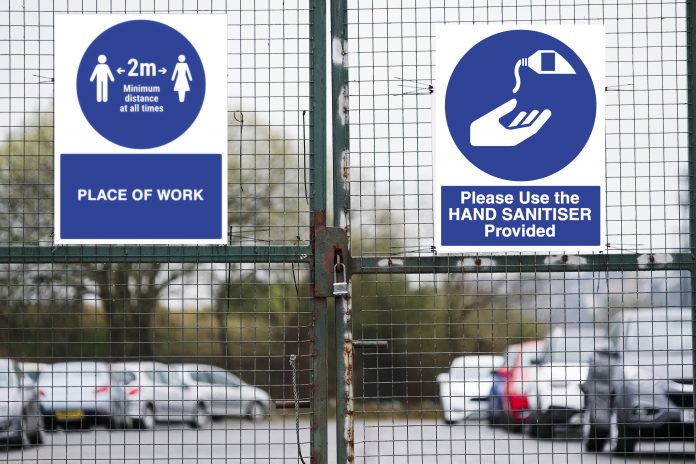The employment team at Thomson Snell & Passmore LLP discusses the key considerations for employers in the construction industry as staff prepare to return to work
Amongst several sector specific guides issued by the government on 11 May is a 31 page one aimed at construction and other outdoor work. It has been prepared to help employers, employees and the self-employed in the UK understand how to work safely during Covid-19 pandemic, keeping as many people as possible that they do not live with 2 metres apart. It reminds employers about their legal obligations to provide a working environment and safe system of work to employees and workers, as well as complying with existing obligations relating to individuals with protected characteristics under the Equality Act 2010.
The cornerstone of the guidance about getting people back to work (but observing social distancing) is the need to carry out a Covid-19 risk assessment just as employers would do for other health and safety related hazards. The assessment must be done in consultation with unions or elected worker health and safety representatives. A workplace health and safety representative must be selected by a recognised trade union or if there isn’t one, chosen by workers themselves. They must be involved in discussions about managing risks and employers must listen to what they have to say, not ignore them.
Managing risks
The managing risks section of the guidance starts, firstly, with a statement about the frequency of handwashing and surface cleaning before then going on to state that businesses and workplaces should make every reasonable effort to enable working from home as the first option. Only when this is not possible should every reasonable effort be made to comply with social distancing guidelines set out by the government (keeping people 2 metres apart wherever possible).
If social distancing cannot be followed, then this raises the question of whether the particular activity placing workers at risk of not being able to observe the 2 metre rule needs to continue for the business to operate and if so, take all mitigating actions possible to reduce the risk of transmission between staff.
Mitigating actions include:
- keeping activity time involved as short as possible;
- using screens or barriers to separate people from each other;
- using back to back or side to side working rather than face to face wherever possible; and
- reducing the number of people each person has contact with – by using fixed teams or partnering so that each person works with only a few others.
No one is obliged to work in an unsafe work environment, particularly those who are especially vulnerable to Covid-19.
Risk assessment
The guidance recommends sharing the results of the risk assessment with your workforce and publishing the results on your website. The guidance provides a template notice that should be displayed in the workplace to show staff that employers have followed this guidance. The notice sets out the 5 steps to safer working together that have been signed off by the employer; and a name of a person to contact about the risk assessment or the number and website of the Health and Safety Executive.
Who is to go into work?
When deciding who should go to work, employers must consider who is essential to be on site and whether support staff should work from home if at all possible. Otherwise if people are required on site, then employers should plan for the minimum number of people needed to operate safely and effectively, whilst monitoring of their wellbeing so that they stay safe but connect with their colleagues.
Workers likely to be required on site are those deemed necessary to carry out physical works, supervise work or conduct work in order to operate safely.
Vulnerable
One of the objectives of the guidance is to protect clinically vulnerable and clinically extremely vulnerable individuals, with the latter continuing to be required to shield themselves from any contact with other people.
Extremely vulnerable individuals are those, for example, with pre-existing conditions such as cancer or have undergone an organ transplant. Vulnerable individuals are those with breathing problems, anyone entitled to an influenza jab (free of charge) or pregnant women. Clearly, the message for people who need to self-isolate is that you need to stay at home.
Arrivals and departures
There is guidance for employers on those coming to and leaving work to maintain social distancing wherever possible on arrival and departure, with, especially, handwashing upon arrival. This means staggering arrival and departure times to reduce crowding in and out of the workplace, providing additional parking or other facilities such as bike racks to help people walk, run or cycle to work where possible, reducing public transport and work place congestion, which mean pinch points for infection to occur.
For the workplace, this means having more entry and exit points into the workplace, using markings and introducing one way flow at entry and exit points, providing alternatives to touch-based security devices such as keypads or fobs. Or even deactivating pass readers at turnstiles in favour of showing a pass to a security personnel at a distance.
Moving around the workplace
The guidance also talks about moving around buildings and work sites to maintain social distancing wherever possible while people travel through the workplace. Reducing movement by discouraging non-essential trips within the buildings and sites is encouraged. The site could be separated into different working zones in order to physically separate groups of workers as much as practical. Reducing job and equipment rotation is also to be recommended, with workers undertaking single tasks for the day. The number of people attending site inductions should be reduced and these should be held outdoors and with social distancing measures in place where possible. One-way flow through the buildings is repeated often throughout the Guidance.
Although outdoor spaces are less likely to have a static place of work than office spaces, where this is the case, workstations should be shared by the smallest number of people and cleansed between occupancy shifts.
Employers will have seen in food stores examples of floor tape or paint to mark areas to keep 2 metre social distancing and the guidance suggests that this is key to ensuring that social distancing is maintained in the workplace.
Meetings
If meetings do have to take place, the objective is to reduce virus transmission from face to face meetings by maintaining social distancing in meetings and dispense with objects like pens and other materials that can so easily be shared. Certainly hand sanitisers should be present in meeting rooms.
Common areas
These areas for employees to gather for breaks or meals need to be risk assessed and recommendations include:
- staggering break times to reduce pressure on break rooms or places to eat;
- using safe outside areas for breaks;
- creating additional space; and
- re-configuring seating and tables to maintain spacing and so reduce face to face interactions.
Cleaning
The guidance recommends cleaning the workplace before reopening after lock down and keeping the workplace clean with deep cleaning and plenty of hand washing sanitation facilities.
PPE
The guidance suggests that unless employers are in a situation where the risk of COVID-19 transmission is very high, then the risk assessment should reflect the fact that the role of PPE (personal protective equipment) and providing additional protection is extremely limited. However if the risk assessment does show that PPE is required, then this must be provided free of charge to workers who need it and such PPE must fit properly.
Finally
The guidance is full of helpful steps broken down by activity and aspects of working life in construction and outdoor work. The government promises to update it regularly to deal with changes to the overall assessment of the risk to public health.
Thomson Snell & Passmore LLP
Twitter: @pragmaticlawyer
LinkedIn: Thomson Snell & Passmore














![[VIDEO] World’s largest crane lifts final ring at Hinkley Point C Big Carl, the world's largest crane, lifting the final liner ring for Hinckley Point C](https://www.pbctoday.co.uk/news/wp-content/uploads/2024/10/94747-218x150.jpg)